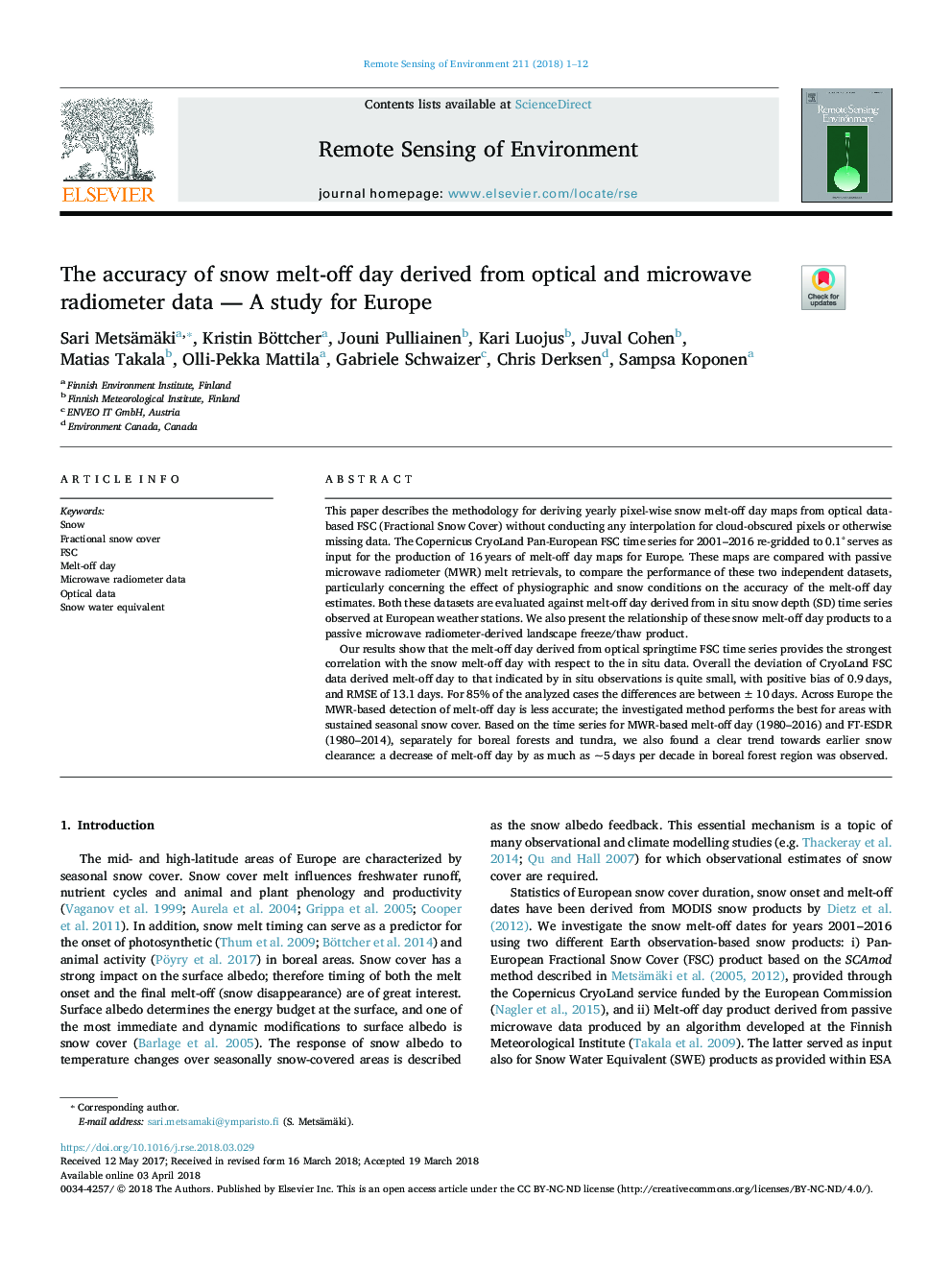| Article ID | Journal | Published Year | Pages | File Type |
|---|---|---|---|---|
| 8866545 | Remote Sensing of Environment | 2018 | 12 Pages |
Abstract
Our results show that the melt-off day derived from optical springtime FSC time series provides the strongest correlation with the snow melt-off day with respect to the in situ data. Overall the deviation of CryoLand FSC data derived melt-off day to that indicated by in situ observations is quite small, with positive bias of 0.9â¯days, and RMSE of 13.1â¯days. For 85% of the analyzed cases the differences are between ±10â¯days. Across Europe the MWR-based detection of melt-off day is less accurate; the investigated method performs the best for areas with sustained seasonal snow cover. Based on the time series for MWR-based melt-off day (1980-2016) and FT-ESDR (1980-2014), separately for boreal forests and tundra, we also found a clear trend towards earlier snow clearance: a decrease of melt-off day by as much as ~5â¯days per decade in boreal forest region was observed.
Related Topics
Physical Sciences and Engineering
Earth and Planetary Sciences
Computers in Earth Sciences
Authors
Sari Metsämäki, Kristin Böttcher, Jouni Pulliainen, Kari Luojus, Juval Cohen, Matias Takala, Olli-Pekka Mattila, Gabriele Schwaizer, Chris Derksen, Sampsa Koponen,
